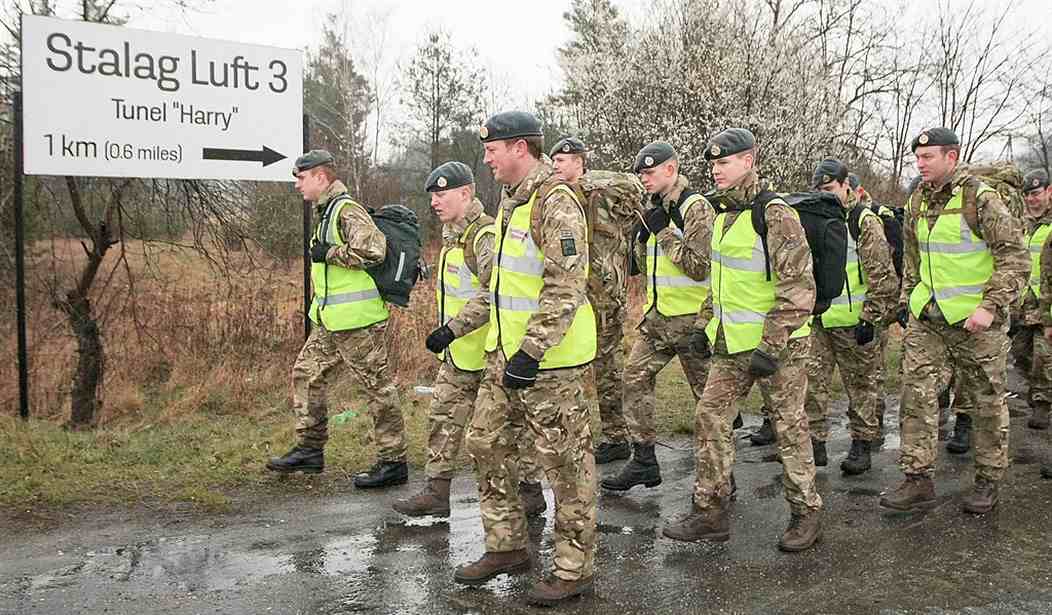March 24 is the 80th anniversary of the "Great Escape." On this day in 1944, Allied prisoners at Stalag Luft III in what is now Żagań, Poland, launched one of the most epic escapes from captivity in history. Two hundred men of the 10,949 prisoners of war were slated to make the break in two tranches of 100 each. Using counterfeit travel documents, forged passports, and cleverly constructed civilian clothes, the prisoners, all of their flight crew, used a trolley system to travel a 102-meter-long, hand-dug tunnel to escape. When the 77th man emerged at 4:55 a.m., he was spotted by German guards.
There were three successful escapees. Two were Norwegians flying in RAF fighter squadrons staffed by Norwegian refugees: Jens Müller (331 Squadron) and Per Bergstand (332 Squadron). The third was Dutch Flight Lieutenant Bram van der Stok (41 Squadron). The Germans weren't amused. Of the 75 men recaptured, 50 were summarily executed. In the aftermath of the war, the British made a great effort to hunt down the perpetrators and eventually hanged 21 Germans and gave 17 more long prison sentences.
One of the participants, Australian journalist turned fighter pilot in the RAF's 92 Squadron, Paul Brickhill, wrote a classic book on the escape called, The Great Escape. That served as the basis for a hit movie of the same name.
The fictional ending featuring Steve McQueen is perfect.For you Millenials, Gen Zs, and whatever, I'd recommend putting aside your anime for a couple of hours and watching a real movie.While the breakout from Stalag Luft III is the most famous prison break, it was nowhere near the biggest or most successful. It occurred at Stalag 315 in Epinal, France, on May 11, 1944. Stalag 315 housed over 3,000 Indian, Sikh, and Gurkha soldiers, mostly captured in Dunkirk and North Africa. On May 11, the Eighth Air Force carried out a 67 bomber raid on Epinal, and some of the collateral damage was the prison. About 70 prisoners were killed, but over 1,000 prisoners made a break for it, and about 500 made it to Switzerland. Unfortunately, their story hasn't received the attention of the Stalag Luft III escape. As with the Great Escape, some of the prisoners were summarily executed upon recapture.
Here are some of the other major prison breaks.
August 1944. Stalag 306, Maribor, Slovenia. In collaboration with partisans and an OSS operative, 106 Allied prisoners broke out and trekked 200 miles to link up with aircraft that flew them to freedom. One hundred of the prisoners made it.
September 20, 1943. Oflag VI-B, Dössel (now Warburg), Germany. Forty-seven Polish prisoners tunneled out of the camp. Of the escapees, 37 were recaptured. The Gestapo executed ten, and 27 were sent to Buchenwald concentration camp, where they were executed. Ten made their way back to Poland or to Russian lines.
September 13, 1941. Oflag VB, Biberach, Germany. Twenty-six officer prisoners tunneled out. Four reached Switzerland; the rest were recaptured.
September 17, 1943. Oflag XVII-A, near Edelbach, Austria. One hundred thirty-two French and Polish prisoners escaped over two successive nights. A total of two made it to freedom.
Even the Germans got into the spirit of it all. On December 23, 1944, 25 German PWs tunneled out of a camp at Papago Park near Phoenix. All were recaptured.
That all seems to be a thing of the past. Post-World War II conflicts haven't yielded many prisoners, and small numbers of prisoners are easily confined and isolated. But, for a moment, on this 80th anniversary of The Great Escape, let's remember the brave men who challenged nearly impossible odds on the chance of winning their freedom.














Join the conversation as a VIP Member